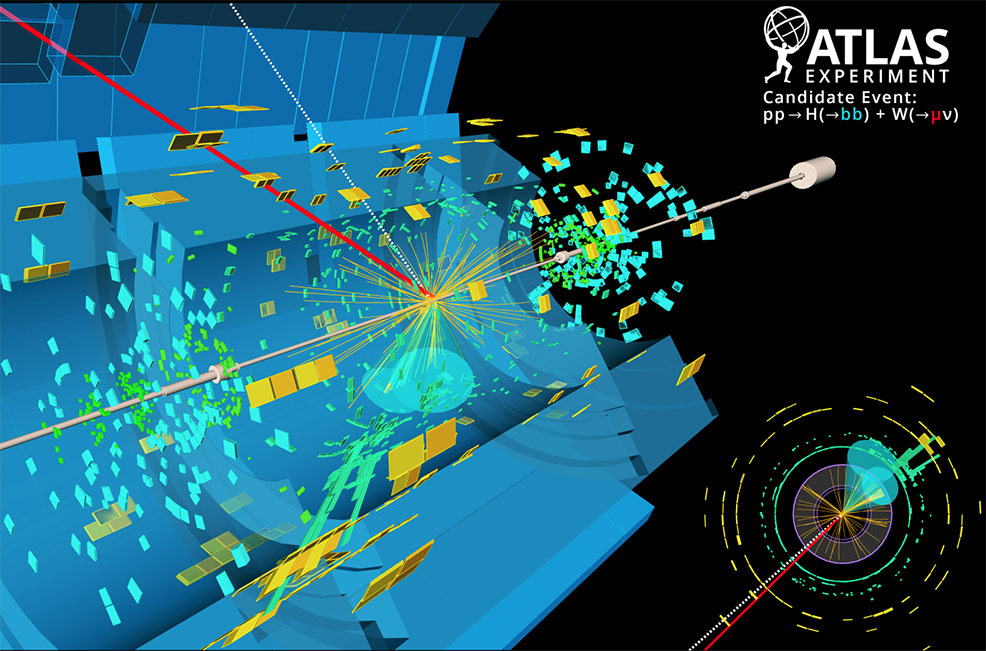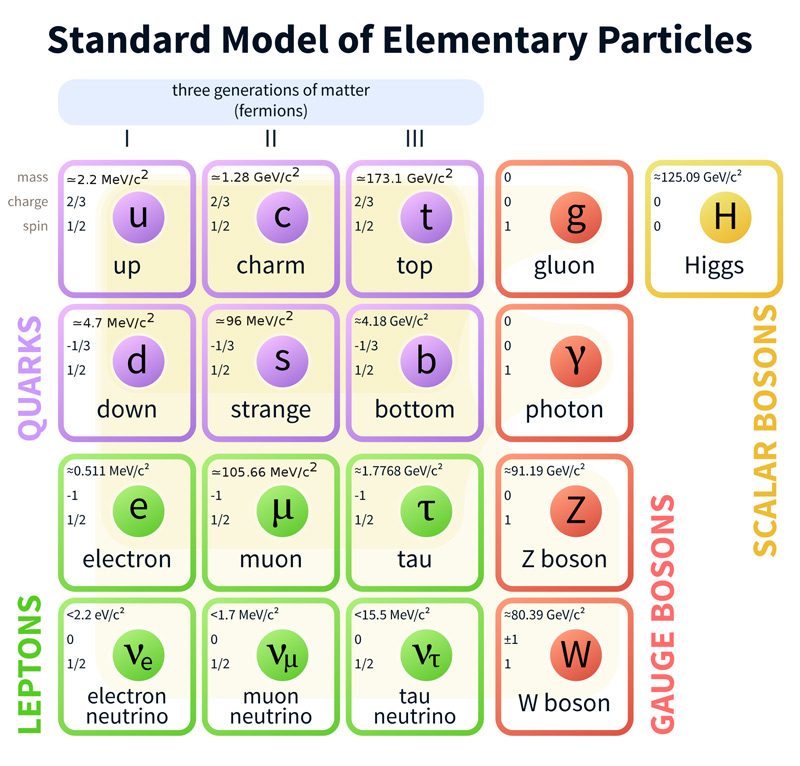
30th August 2018 Higgs Boson observed decaying into bottom quarks Physicists officially report, for the first time, observing the Higgs boson decay into a pair of bottom quarks – an interaction that is primarily responsible for the "natural width" (range of masses with which a particle is observed) of the boson.
The Higgs boson, an elementary particle in the Standard Model, was first theorised in 1964. Its existence would not be confirmed until half a century later, however, during high energy experiments at CERN’s Large Hadron Collider (LHC). Being highly unstable, the Higgs boson was believed to decay into other particles almost instantly. It had long been theorised to decay along five signature pathways, four of which were subsequently observed at the LHC. The fifth hypothetical pathway, in which it decays into so-called bottom quarks, is both the most difficult to trace and the most common – estimated to be the outcome of 60% of such decay events. Now, at long last, the ATLAS Collaboration at the LHC has finally observed the Higgs boson decaying into a pair of these bottom (b) quarks, over six years after the 2012 discovery of the Higgs boson. “ATLAS is proud to announce the observation of this important and challenging Higgs boson decay," said Karl Jakobs, ATLAS spokesperson. “While the result is certainly a confirmation of the Standard Model, it is equally a triumph for our analysis teams. During the early preparations of the LHC, there were doubts on whether this observation could be achieved. Our success is thanks to the excellent performance of the LHC and the ATLAS detector, and the application of highly sophisticated analysis techniques to our large dataset.” The ATLAS Collaboration first presented a preliminary result of this observation last month at the 2018 International Conference on High-Energy Physics (ICHEP) in Seoul. The team has now submitted their results for publication in Physics Letters B. They are based on combined Run 1 and Run 2 data, and utilised machine learning technology to reach a significance of 5.4 standard deviations.
This is among the most demanding analyses carried out by ATLAS so far: “LHC collisions produce b-quark pairs in great abundance, making it hard to spot those originating from Higgs boson decays,” says Kerstin Tackmann, ATLAS Higgs working group convener. “The analysis teams therefore focused on signatures, in particular the production of a Higgs boson in association with a vector boson, which increased substantially the purity of the signal.” This technique proved to be highly successful. The team's announcement is a new confirmation of the so-called “Yukawa couplings”. Similar to the Higgs mechanism, these couplings to the Higgs field provide mass to charged fermions (quarks and leptons), which are the building blocks of matter. Combined analyses of the Run 1 and Run 2 datasets have resulted in the first measurements of these couplings, as seen in the recent ATLAS observation of Higgs boson production in association with a top-quark pair and the observation of the Higgs boson decaying into pairs of tau leptons. The new ATLAS result also establishes the production of a Higgs boson in association with a vector boson above five standard deviations. ATLAS has now observed all main production modes of the Higgs boson. The ATLAS team is now transitioning from observations to precise measurements of its properties: “We now have the opportunity to study the Higgs boson in unprecedented detail and will be able to further challenge the Standard Model,” concludes Karl Jakobs. In the video below, two protons (q) smash together to make a W or Z boson (W/Z) and a Higgs boson (H), which then decays into two bottom quarks.
Comments »
If you enjoyed this article, please consider sharing it:
|








